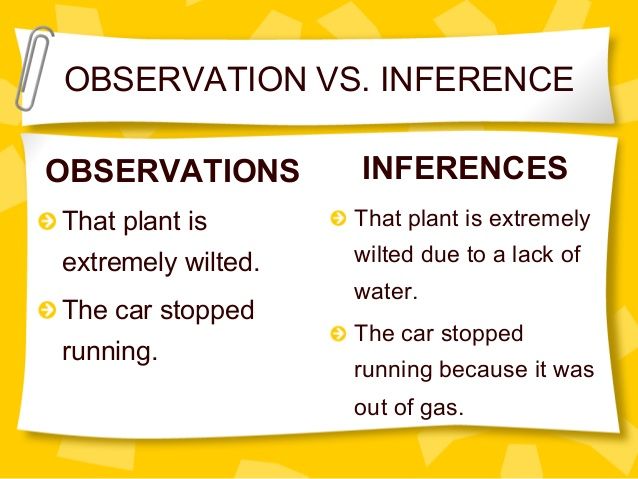
Present an example of an observation and inference. Your response should have four parts.
First, describe the person you observed by gender, age, and situation (e.g., a pregnant woman in her early twenties walking in the market with two small children). Second, describe the person’s interaction with a product or service (e.g., the woman stopped at the fruit stand, examined a papaya, asked the vendor what it cost, and put it back in the pile without purchasing it). Third, make an inference about his or her motives, priorities, or perceptions (e.g., She perceived the papaya as being of poor quality.) Fourth, make one alternative inference about his or her motives, priorities or perceptions (e.g., She determined that the price was too high, and she gives a higher priority to buying other products at this time.)
My Observation and Inference Example:
First, I observed a middle-aged man in his late 40s sitting alone at a café. He was wearing a suit and appeared to be waiting for someone.
Second, the man took out his smartphone and started scrolling through various social media platforms. He seemed engrossed in his phone, occasionally checking the time and looking around to see if anyone was approaching.
Third, based on this observation, I can infer that the man is waiting for an important business meeting or appointment. His attire suggests that he is dressed professionally, and his behavior of checking the time and looking around indicates that he is expecting someone to meet him at the park. Additionally, his engagement with his smartphone could be a way for him to pass the time while waiting.
Fourth, an alternative inference could be that the man is actually waiting for a personal meeting rather than a business one. While his suit may suggest a professional engagement, it is also possible that he is meeting a friend or family member in the café. His behavior of checking the time and looking around could be due to anticipation or excitement about the personal meeting. Furthermore, his use of the smartphone could indicate that he is communicating with the person he is meeting or simply keeping himself occupied until they arrive.
Inferences are conclusions or interpretations that we make according to our observations. They involve making educated guesses about someone’s motives, priorities, or perceptions based on what we observe about their behavior or actions. It is important to note that inferences may not always be accurate and can vary depending on individual perspectives and biases (Drew, 2023).
In this example, the first inference suggests that the man is waiting for a business meeting or appointment. This inference is based on the observation of his professional attire, his behavior of checking the time and looking around, and his engagement with his smartphone, which could be related to work-related communication or tasks.
The second inference provides an alternative perspective, suggesting that the man may be waiting for a personal meeting. This inference acknowledges the possibility that the man’s attire and behavior could also be attributed to a personal engagement rather than a professional one.
Inferences are valuable in understanding human behavior and can help us make sense of the world around us. However, it is crucial to recognize that inferences are not definitive truths but rather educated guesses based on limited information. Therefore, it is important to consider multiple perspectives and gather more evidence before drawing firm conclusions (Drew, 2023).
References
Drew Ch. (2023, September 4). Observation Vs Inference: Similarities And Differences. Retrieved from https://helpfulprofessor.com/observation-vs-inference/
